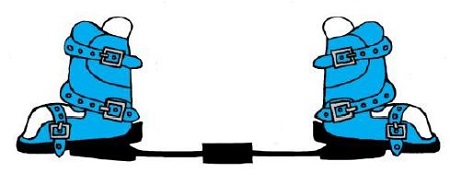Patient EducationMay | 16 | 2019
Clubfoot and Clubfeet: What You Need to Know
Clubfoot affects a baby’s foot or feet. In this handout, you will learn about clubfoot and clubfeet. You will also learn about what causes clubfoot and how we treat it.
You can call the Fetal Care Program at MGfC at 857-238-CARE (2273) to schedule an appointment.
What Is Clubfoot?
Clubfoot is a condition that affects your baby’s foot. For babies who have clubfoot, the foot turns in toward the ankle. When it affects both feet, it’s called clubfeet. The medical word for clubfoot is talipes equinovarus.

What Causes Clubfoot?
Clubfoot is caused by the muscles, tendons and bones in your baby’s foot not forming correctly during the first trimester (first 3 months) of pregnancy.
For every 1,000 babies born, 1 of them will have a clubfoot or clubfeet. This means clubfoot and clubfeet are common.
How Do We Diagnose Clubfoot?
Doctors can diagnose clubfoot with an ultrasound at 18-20 weeks of pregnancy. After the diagnosis, we will refer you to an orthopaedic doctor (a doctor who treats problems with muscles, bones and joints).
How Do We Treat Clubfoot?
We begin treatment right away or a few weeks after your baby is born. We treat clubfoot using the Ponseti technique, which includes using casts, simple surgery and a foot brace.
- Ponseti casting and foot stretches
Ponseti casting is when doctors use plaster leg casts to gently and slowly stretch your baby’s foot and ankle into the correct position. The cast starts at the hip and goes down to the toes.
Once a week for 6-8 weeks, we change the casts and help your baby with foot stretches until most of the clubfoot is corrected.
- Achilles tenotomy
An Achilles tenotomy is a simple surgery that helps stretch the muscles in your baby’s foot and ankle into the correct position. We do this surgery in an operating room.
For the Achilles tenotomy, an orthopaedic doctor makes a small cut in your baby’s ankle that helps stretch the tendon. This helps bring your baby’s ankle into the correct position. We then give your baby a new leg cast to protect the tendon as it heals. The cast should stay on for about 3 weeks.
- Mitchell brace
A Mitchell brace is a brace that helps hold your baby’s foot in the correct position. It looks like a bar with shoes on each end to hold your baby’s feet.

Clubfoot doesn’t get better on its own. Babies with clubfoot usually need all 3 of these treatments to help correct the clubfoot. Your baby’s doctor will explain each treatment in detail and answer any questions you have.
You and your family also play an important part in your baby’s care. We will make sure to involve you in every step along the way. Being involved with your baby’s care will also help your baby live a happy, normal life with a foot that works correctly and doesn’t hurt.
What Is the Long-Term Outlook for My Baby?
Sometimes, the clubfoot might look a little smaller than the unaffected foot. This means your baby might need different shoe sizes later in life. Your baby’s lower leg (calf) might also look a little thinner than the unaffected leg.
As your baby grows up, he/she will need to see an orthopaedic doctor to make sure the clubfoot is growing and healing correctly.
With treatment, your baby should live a happy, normal life with a foot that works correctly and doesn’t hurt. Your baby’s foot will also look similar to a typical foot. He/she might also be able to play sports or other fun activities.
Who Can I Contact if I Have Questions?
You can call the Fetal Care Program at MGfC at 857-238-2273 if you have questions or need to schedule appointments. We can also help refer you to the best type of doctors for your baby’s care.

